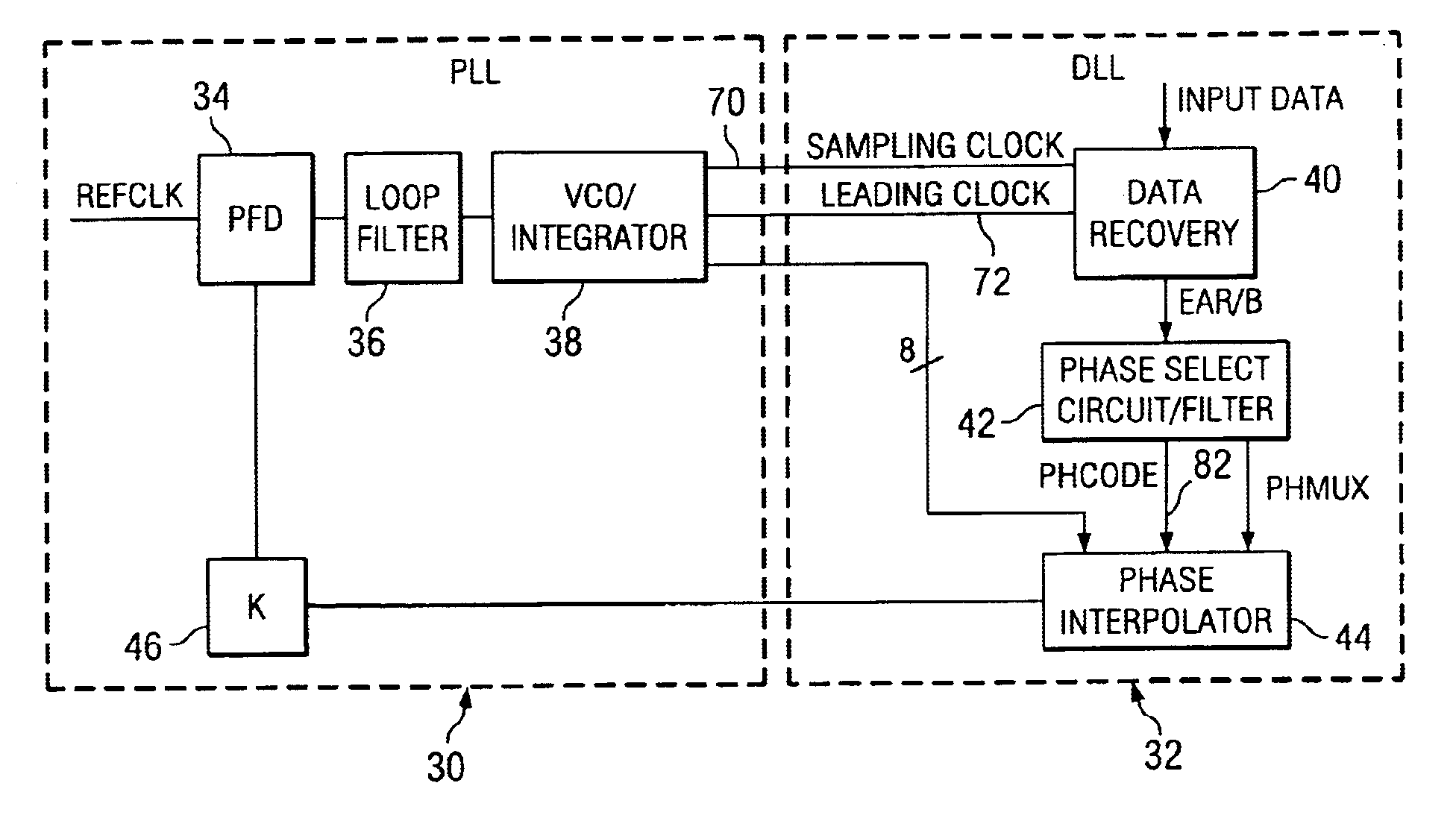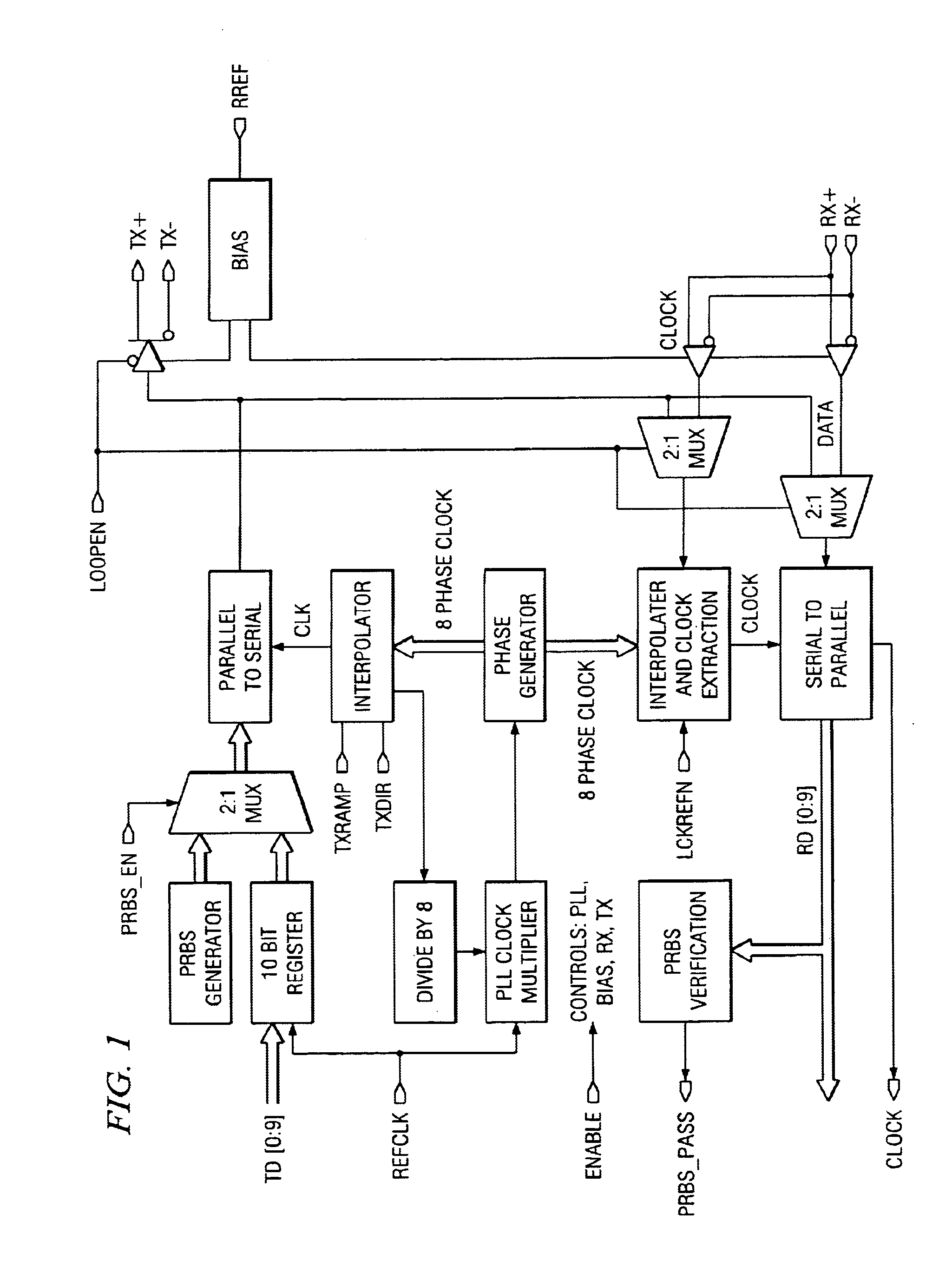Time division multiplex data recovery system using close loop phase and delay locked loop
a data recovery and time division multiplex technology, applied in the direction of digital transmission, pulse automatic control, electrical equipment, etc., can solve the problems of increasing the power required, large hunting jitter of the data loop receiver, and the great disadvantage of high power requirements, so as to reduce the number of times of data recovery, reduce the amount of power, and reduce the effect of duty cycl
- Summary
- Abstract
- Description
- Claims
- Application Information
AI Technical Summary
Benefits of technology
Problems solved by technology
Method used
Image
Examples
Embodiment Construction
[0028]Architecturally, the transceiver uses a conventional PLL 30 frequency synthesizer on the Transmit side to generate high speed timing references. But on the receive side, according to a preferred embodiment of the invention, it uses an interpolator 44 and a bimodal data / clock receiver 40,41,42 to determine the ideal placement of the theoretical recovered clock. The phase select circuit 42 and phase interpolator 44 then picks one of the many, i.e. 8, phases of the Delay Locked Loop (DLL) 32 (driven by the Transmit PLL 30) that best matches the ideal and uses it as the recovered clock. This process continuously repeats itself as the incoming frequency is slightly off-frequency from the reference frequency.
[0029]The Phase Locked Loop (PLL) 30 design consists of a phase / frequency detector 34, a differential charge pump, an on chip loop filter capacitor 36, a replica-feedback current source bias, a differential voltage controlled oscillator (VCO) 38, differential to single end buffe...
PUM
 Login to View More
Login to View More Abstract
Description
Claims
Application Information
 Login to View More
Login to View More - R&D
- Intellectual Property
- Life Sciences
- Materials
- Tech Scout
- Unparalleled Data Quality
- Higher Quality Content
- 60% Fewer Hallucinations
Browse by: Latest US Patents, China's latest patents, Technical Efficacy Thesaurus, Application Domain, Technology Topic, Popular Technical Reports.
© 2025 PatSnap. All rights reserved.Legal|Privacy policy|Modern Slavery Act Transparency Statement|Sitemap|About US| Contact US: help@patsnap.com



